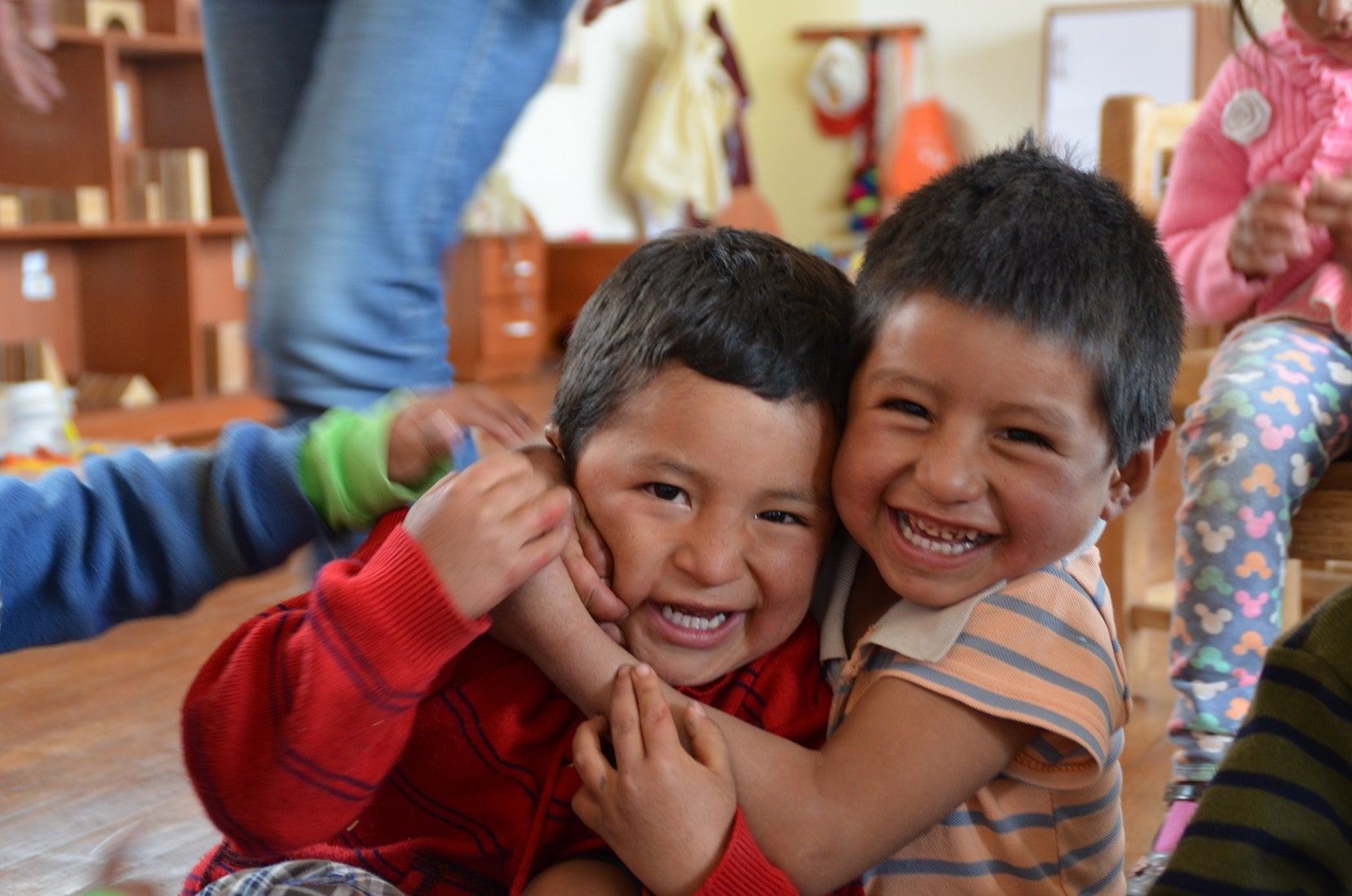At 4,000 meters above sea level, in the Andes, is the village of Linda Linda. It is a beautiful place, in the middle of the mountains, and belongs to the region of Huánuco, one of the poorest regions of Peru.
In 2013, during our first visit, we could see that children aged three to five who attended school had no place to learn. The school was made of adobe, with a thatched roof. I had no light, no drinking water. In the only classroom, there was practically no educational material. Worse, neither the boys nor the teacher knew what to do with the few materials they had. When we set up towers with blocks of wood, the children could not count how many blocks each tower had, they could not even tell us which tower was the tallest.
Although Peru has made significant progress in coverage at the preschool level in recent decades, attending to 81% of children between 3 and 5 years in 2015, the challenge of ensuring that they are laying the groundwork for success in school in the future is enormous, particularly in the most vulnerable parts of the country.
The Initial Education Improvement Program in Peru (PMEI) financed by the IDB, KfW and the Peruvian government seeks to improve the quality of initial education in three of Peru’s poorest provinces: Acobamba, in the Region Huancavelica, La Mar, in the Ayacucho Region, and Pachitea, in Huánuco. The PMEI has a component of improvement of educational infrastructure, but its heart is the pedagogical component, which strengthens the capacities of the teachers and the work with the parents so that the boys and girls learn more and better in the school.
During the four years it has been running, we have faced significant challenges. In hard-to-reach populations, it has not been easy to find construction companies willing to take small jobs in remote locations. It has also been an important challenge to be able to attract highly qualified pedagogical partners to work hand in hand with teachers in improving their classroom performance.
This year we are developing a rigorous evaluation of the program that will give us detailed information about each of its components. But there is no doubt that the program has had an extraordinary impact.
Last year we went back to visit Linda Linda’s school. The new school infrastructure is welcoming, it has decent spaces where children can learn by playing with their teachers and their colleagues. The school has learning corners that promote basic notions of math and science, love of reading, and development of psychomotor skills.
Involving families in school life is essential. In that sense, we have witnessed the crucial role they play in filling the school life. In some families, they take care of the school garden; in others, parents have worked with children to carry the children’s toothbrushes in school.
In terms of learning and teaching performance, the contrast we have seen between the first and last visit is enormous. Now the children teach us the words and games they have been learning all year long and they are excited to show us how many people know how to count on their hands. Teachers know how to encourage them to learn, how to receive them, and how to talk to families to help their children. But perhaps most importantly, families have seen the results and now make efforts to have their daughters and sons come to school every day. They appreciate the work of the teachers and collaborate so that their children are well attended, learn and can take advantage of this opportunity.
All these results inspire us greatly to continue working. And while the challenge of having pedagogical partners and running infrastructure in these areas continues, the commitment of the teams involved in the field is enormous and allows the greatest obstacles to be overcome with enthusiasm. It is the teacher’s assistant’s passion, the parents, the teachers themselves, and of course the girls and boys of the program that really make this project so successful.
Given the limited access to such programs in the region, this important step will serve as a reference for bridging the learning gap between urban and rural areas, with a view to ensuring a good start in the education of all children, regardless of zone or the family in which they were born.



Leave a Reply